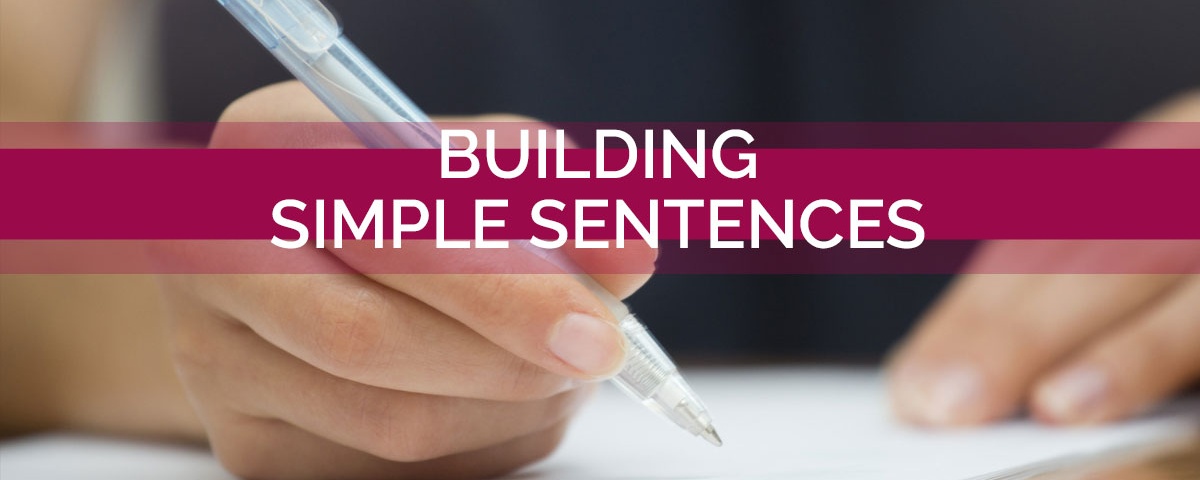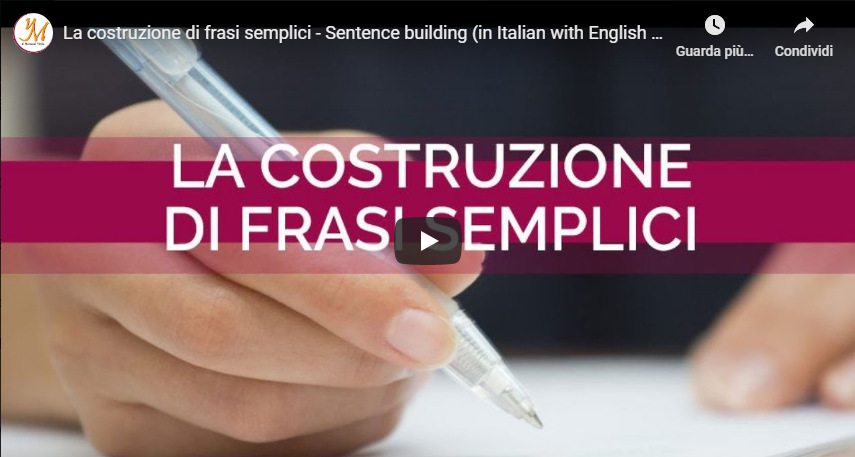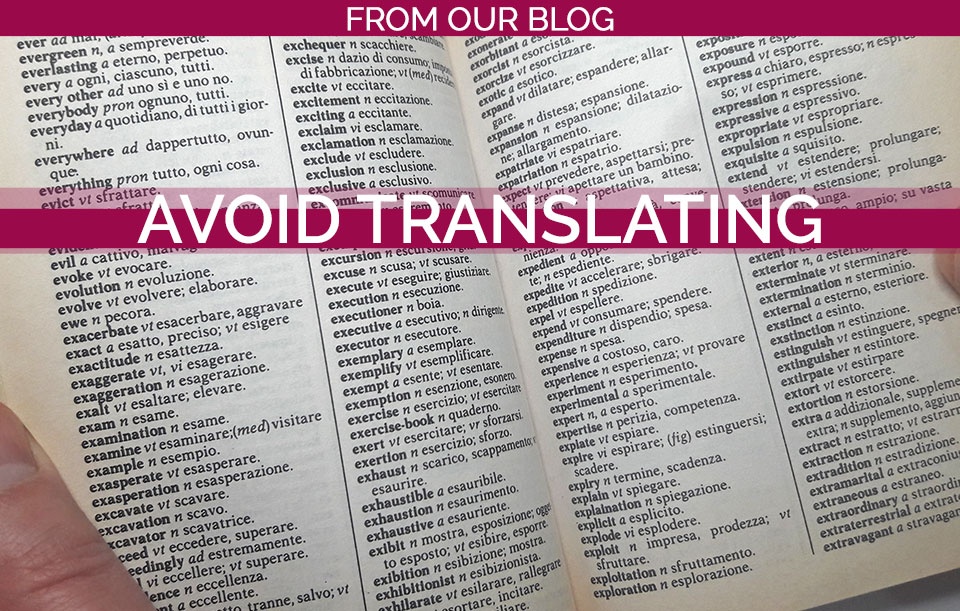
The evolution of the English language
15/01/2019
Learning languages with films
03/12/2019I
n a previous article in this blog (Flashcards: an easy and foolproof method to improve learning a foreign language!) we talked about how to create flashcards to effectively memorise words in order to broaden our vocabulary. Flashcards work well and enable you to obtain good results in the medium and long term with little regular practice.
Memorising many words is essential to communicate in a foreign language, but it is true that once you know the words you still have difficulties in forming a sentence and putting words together. This is because very often we tend to translate sentences into the target language, which we have already formulated into our native language in our head. This instinctive - almost physiological - process, is difficult to avoid in the initial phase of learning and unfortunately, it often results in mistakes as each language has its own syntactical structure. Fortunately, it is likely to disappear through constant exercise and practice.
F or this reason, I thought of writing this post to share with you an exercise that I recommend to my students to help them systematise and thus automatise the process of building sentences in English. In this post I will give you instructions on how to create sentences in English and I will leave some materials for learning the English language at your disposal. The same system can be used to build simple sentences in other languages as well after adapting the material to the language that you are studying.
Memorising many words is essential to communicate in a foreign language, but it is true that once you know the words you still have difficulties in forming a sentence and putting words together. This is because very often we tend to translate sentences into the target language, which we have already formulated into our native language in our head. This instinctive - almost physiological - process, is difficult to avoid in the initial phase of learning and unfortunately, it often results in mistakes as each language has its own syntactical structure. Fortunately, it is likely to disappear through constant exercise and practice.
F or this reason, I thought of writing this post to share with you an exercise that I recommend to my students to help them systematise and thus automatise the process of building sentences in English. In this post I will give you instructions on how to create sentences in English and I will leave some materials for learning the English language at your disposal. The same system can be used to build simple sentences in other languages as well after adapting the material to the language that you are studying.
1 - Preparing the material
B efore starting it is fundamental to know the structure of a simple sentence which is composed of a subject, a verb and, often but not always, an expansion (direct object, indirect object, adverbial of place, adverbial phrase of time...).
We will then create flashcards as explained in the article, in other words by writing the word in your native language on one side of the card and in English on the back, or only in English for each of the following categories.
We will use cards made of cardboard using a different colour for each category:
- three flashcards indicating the type of sentence we want to create (positive, negative and question)
- subject of the sentence (MY BEST FRIEND, MY PARENTS… or personal subject pronouns e.g. I, YOU, HE… )
- verb (we will prepare flashcards with the base form of the verb for example WORK, GO…)
- adverb of frequency (e.g. USUALLY, SOMETIMES…). To make it easier, I recommend using adverbs of frequency only when making positive sentences and in the Present Simple tense.
2 – Placing the flashcards
W e will now stack the cards in little piles according to the category they belong to and with the side containing the English word face down. We will put them in this order from left to right (as in the following picture): type of sentence / subject / adverb of frequency / verb
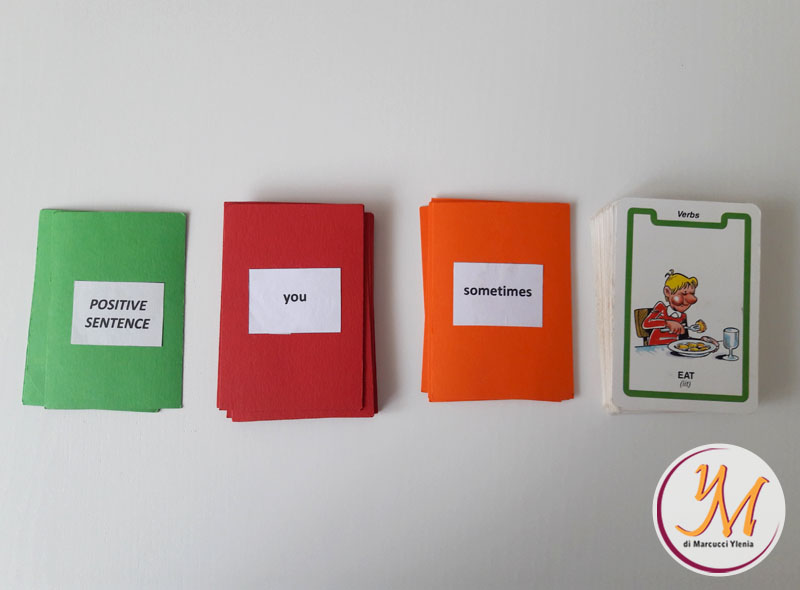
3 – Exercise
B efore starting the exercise, we will first have to decide in which tense we want to build sentences usually either the Present Simple or the Past Simple. If we decide to practise making sentences in the Past Simple, I recommend removing the flashcards containing adverbs of frequency.
Then we will proceed as follows:
- Turn the first card indicating the type of sentence we should create (positive sentence, negative sentence or question). For example, a POSITIVE SENTENCE.
- Turn the second card indicating the subject. For example MY PARENTS
- Turn the third card indicating the adverb of frequency. For example, ALWAYS
- For the fourth card indicating the verb, since we have created flashcards both in Italian (or French) and in English, before turning the card we read the verb in Italian (or in French) and we say it aloud in English. Let's suppose it is LAVORARE (in Italian) or TRAVAILLER (in French), so WORK
If we want to repeat the exercise in the Past Simple tense, we will ensure to correctly conjugate regular or irregular verbs in the past. Using the same cards as before, except for the cards with adverbs of frequency, we could make a sentence like this: “Yesterday my parents worked all day”.
4 – Examples
B elow you can find an overview of some sentences created with this system.
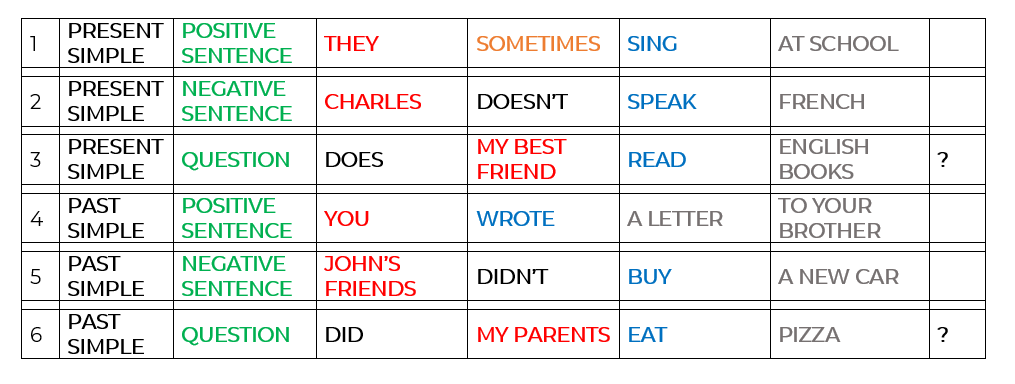
I have also made a short video that you can watch by clicking on the image here below where I will show you how easy it is to practise making sentences using this method, and how I have created the sentences of the examples shown in the table.
I
f you are starting to learn English and you are practising using this method, after saying the sentence aloud, I suggest writing it down so that you can check it at a later time, perhaps with the support of your teacher.
Practising is essential to make progress because, as we say in English, ‘Practice makes perfect’!
Practising is essential to make progress because, as we say in English, ‘Practice makes perfect’!

